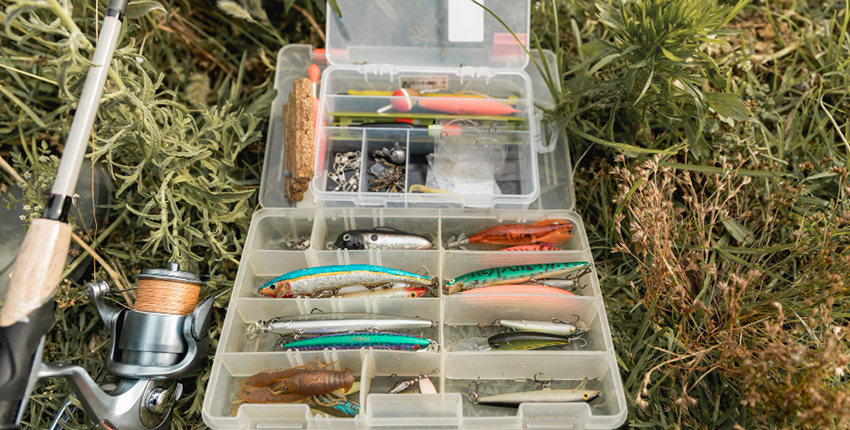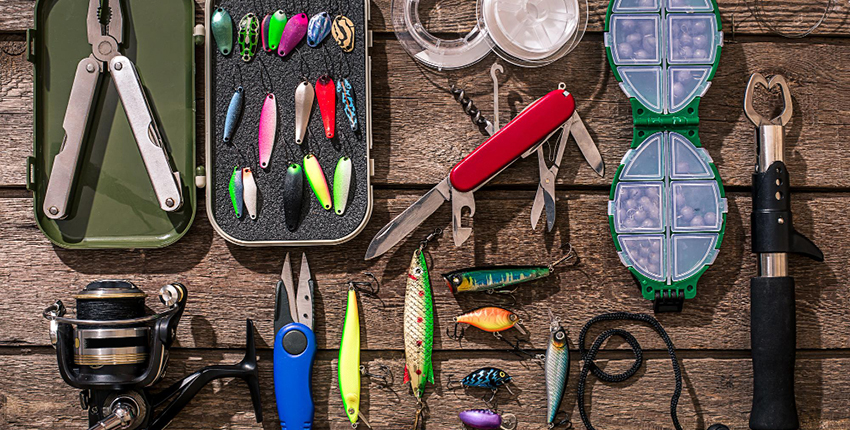How to Maintain Your Fishing Gear Box for Longevity and Performance
A well-organized and maintained fishing gearbox is essential for both longevity and performance. Whether you are a seasoned angler or a weekend hobbyist, taking care of your fishing tackle box will ensure your equipment remains in top condition. From fishing lure boxes to general fishing storage boxes, this guide will walk you through the steps to keep your fishing equipment box neat, tidy, and ready for action.
Why Maintenance is Important for Your Fishing Gear Box
Your fishing gear tackle box serves as the heart of your fishing setup. All your essential tools, from lures and hooks to lines and sinkers, are kept. Properly maintaining your fishing accessory boxes helps you avoid rust, corrosion, and clutter that can negatively impact your gear’s performance. A clean and well-maintained fishing tackle box with tackle not only extends the life of your equipment but also improves your fishing efficiency by keeping everything organized and easily accessible.
1. Clean Your Fishing Tackle Box Regularly
The first step to maintaining your fishing gear boxes is regular cleaning. After every fishing trip, make sure to empty your fishing box and clean out any dirt, debris, or water that may have accumulated. Saltwater fishing, in particular, can be harsh on your gear, leading to corrosion if not promptly cleaned.
-
How to Clean Your Tackle Boxes:
-
- Empty the box and separate all tools and gear.
- Wipe down the interior and exterior of the fishing storage boxes with a damp cloth.
- Use a mild detergent if needed, especially for cleaning saltwater residue.
- Let your fishing tackle box air dry completely before reassembling your gear.
Regular cleaning not only keeps your fishing tackle box fresh but also helps you spot any potential problems early, such as rusting hooks or frayed lines.
2. Organize Your Tackle Box Efficiently
An organized fishing Box & Luggage is crucial for performance. By keeping your tools and accessories neatly arranged, you can save time and effort when you’re out on the water.
-
Tips for Organizing Your Fishing Gear Tackle Box:
-
- Use dividers to separate different categories of gear. Many fishing accessory boxes come with adjustable compartments that you can tailor to your specific needs.
- Label compartments to quickly identify where items like lures, hooks, and weights making accessories are stored.
- Group similar items together. For instance, keep all your hooks in one compartment, lures in another, and weights in their section.
- Remove unused gear periodically. If certain items are not being used frequently, take them out to avoid unnecessary clutter in your fishing lure box.
Organizing your fishing tackle box ensures that you can quickly find what you need, reducing downtime during your fishing trips.
3. Protect Your Gear from Rust and Corrosion
Fishing Tackle is often exposed to water, especially when fishing in saltwater environments. Rust and corrosion are common enemies of metal tools like hooks, pliers, and lures Fishing. To extend the life of your gear, it’s important to take preventive measures.
-
How to Prevent Rust in Your Fishing Tackle Box:
-
- Dry your gear before storing it. After each trip, make sure all metal tools and tackle are completely dry before putting them back into your fishing storage boxes.
- Use anti-rust strips or silica gel packs. These can be placed in your fishing tackle box to absorb moisture and prevent rust formation.
- Rinse your gear with fresh water after saltwater fishing. Salt accelerates corrosion, so a quick rinse can go a long way in protecting your equipment.
By taking these small steps, you can prevent rust and corrosion from damaging your expensive fishing gear.
4. Inspect Your Gear and Box for Damage

Regularly inspecting both your fishing gear boxes and the tools inside is essential for maintaining performance. Look for signs of wear and tear, such as broken clasps on your fishing tackle box, rust on your hooks, or frayed fishing lines.
-
Key Areas to Inspect:
-
- Box hinges and clasps: Ensure the closures are functioning properly to keep your gear secure.
- Compartments: Check for any cracks or breaks in the dividers of your fishing accessory boxes.
- Fishing tools: Inspect your hooks, lures, and pliers for signs of rust or damage.
If any part of your fishing gear tackle box or equipment shows wear, replace or repair it immediately to avoid potential issues during your next fishing trip.
5. Store Your Tackle Box in a Cool, Dry Place
Where you store your fishing gear tackle box when not in use plays a crucial role in its longevity. Heat, humidity, and moisture can damage both your box and the tools inside.
-
Ideal Storage Tips:
-
- Store your fishing tackle box in a cool, dry environment to prevent moisture buildup.
- Avoid leaving your fishing box in direct sunlight, as prolonged exposure can weaken the plastic and warp the materials.
- Use a storage bag or cover to further protect your fishing storage boxes from dust and dirt.
Proper storage ensures that your fishing tackle box with tackle remains in pristine condition and is ready to go when you are.
Conclusion
Maintaining your fishing gear box is essential for extending the life of your fishing equipment and ensuring top-notch performance on your fishing adventures. By regularly cleaning, organizing, and protecting your fishing gear tackle box, you can prevent rust, damage, and clutter. Following these tips will keep your fishing tackle box in excellent condition, allowing you to focus on what matters most—enjoying your time on the water and catching fish.



